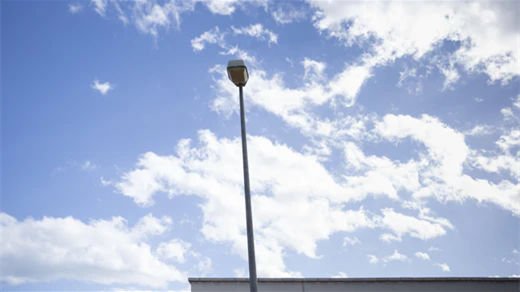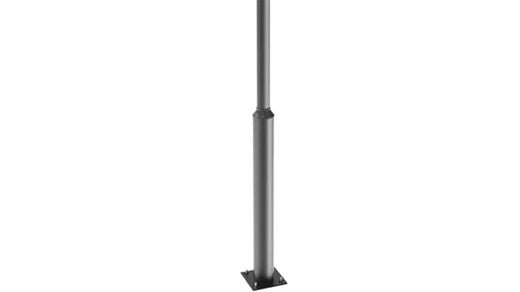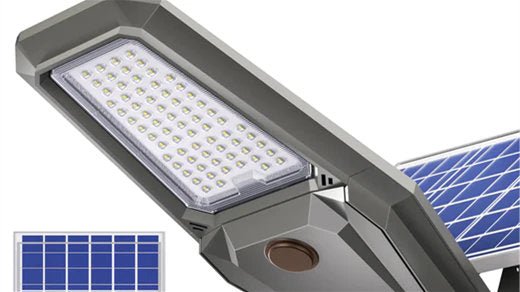Street light poles occasionally require repair and routine maintenance to ensure optimal performance and longevity. In this comprehensive guide, we will explore effective strategies for repairing damaged residential street light poles in emergencies, provide practical tips for routine maintenance, and highlight essential considerations to keep in mind during maintenance and repair processes.
Emergency Repair of Damaged Street Light Poles
In situations where street light poles are damaged or destroyed, swift action is essential to restore illumination and mitigate safety risks.
1. Assessment of Damage
Begin by assessing the extent of damage to the street light pole and surrounding area. Determine if the pole can be salvaged through repair or if replacement is necessary.
2. Securing the Area
Prioritize safety by securing the area around the damaged street light pole to prevent access by residents and vehicles. Utilize caution tape or barriers to indicate potential hazards.
3. Prompt Notification
Immediately report the damaged street light pole to relevant authorities, such as homeowner associations or municipal departments responsible for street lighting. Prompt notification facilitates coordination of repair efforts and ensures timely resolution.
4. Temporary Lighting Solutions
Consider implementing temporary lighting solutions, such as portable solar-powered lights or battery-operated fixtures, to provide interim illumination while repairs are underway. Temporary lighting enhances safety and visibility in the affected area.
5. Professional Repair Services
Engage qualified technicians or contractors experienced in street light pole repair to assess the damage and execute necessary repairs. Professional expertise ensures the safety and effectiveness of repair efforts, minimizing downtime and inconvenience for residents.

Techniques for Routine Maintenance of Street Light Poles
Regular maintenance is essential to preserve the functionality and appearance of street light poles over time.
Aluminum Poles
- Cleaning: Use mild detergent solutions and soft brushes to clean aluminum poles regularly, removing dirt, debris, and pollutants that may accumulate on surfaces.
- Inspection: Conduct periodic visual inspections of aluminum poles to identify signs of corrosion, oxidation, or surface damage. Pay particular attention to welds, joints, and fixtures for any signs of deterioration.
- Lubrication: Apply lubricants to moving parts, such as hinges and joints, to reduce friction and prevent corrosion. Use lubricants compatible with aluminum to ensure optimal performance and longevity.
- Electrical Testing: Test electrical components, including wiring and fixtures, to ensure proper functionality and adherence to safety standards. Replace damaged or malfunctioning components promptly to maintain consistent illumination.
Steel Poles
- Cleaning: Clean steel poles regularly to remove dirt, grime, and corrosive substances that may accumulate on surfaces. Use mild detergents and soft brushes to avoid scratching or damaging the pole's finish.
- Inspection: Perform visual inspections of steel poles to identify signs of rust, corrosion, or structural damage. Focus on areas prone to moisture accumulation, such as the base and lower sections of the pole.
- Corrosion Prevention: Apply rust-inhibiting coatings or paints to steel poles to protect against corrosion and extend their service life. Monitor the effectiveness of coatings and touch up any areas showing signs of corrosion.
- Foundation Inspection: Inspect the foundation of steel poles for signs of settling, shifting, or structural compromise. Address any issues promptly to maintain stability and prevent tilting or leaning.
Fiberglass Reinforced Polymer (FRP) Poles
- Cleaning: Clean FRP poles regularly using gentle cleaning agents and soft cloths to remove dirt, dust, and environmental contaminants. Avoid abrasive cleaners or brushes that may scratch or damage the pole's surface.
- Inspection: Conduct visual inspections of FRP poles to detect signs of surface damage, delamination, or discoloration. Check for cracks, chips, or areas of weakness that may compromise structural integrity.
- UV Protection: Apply UV-resistant coatings or sealants to FRP poles to protect against UV degradation and color fading caused by prolonged exposure to sunlight. Reapply coatings as needed to maintain UV protection.
- Non-Conductive Properties: Verify the non-conductive properties of FRP poles periodically to ensure electrical safety. Test for continuity and insulation resistance to confirm compliance with safety standards.
By implementing these maintenance techniques tailored to the specific characteristics of aluminum, steel, and fiberglass reinforced polymer (FRP) street light poles, homeowners and maintenance professionals can prolong their lifespan, ensure optimal performance, and contribute to safer and more reliable lighting infrastructure.

Conclusion
Effective repair and routine maintenance are essential for preserving the functionality, safety, and aesthetic appeal of street light poles. By following the guidelines outlined in this comprehensive guide, homeowners, homeowner associations, and maintenance professionals can ensure the reliable operation and longevity of street lighting systems, contributing to safer and more vibrant neighborhoods.


































Leave a comment
This site is protected by hCaptcha and the hCaptcha Privacy Policy and Terms of Service apply.